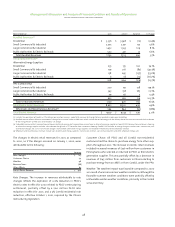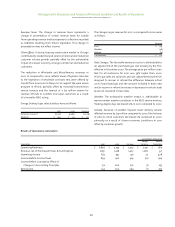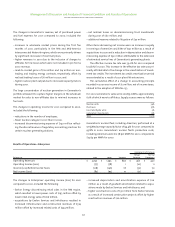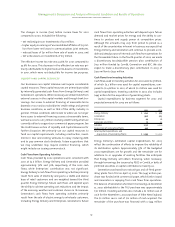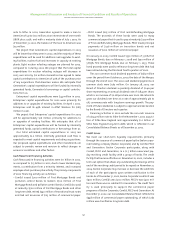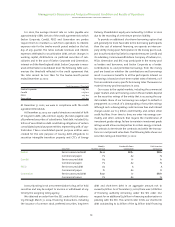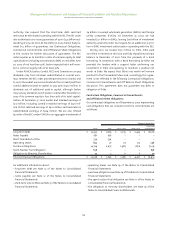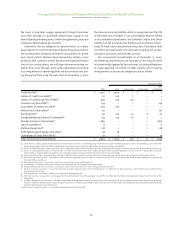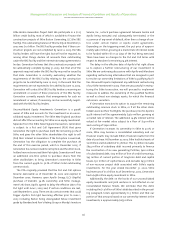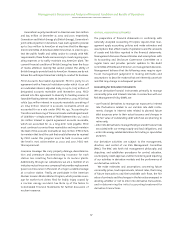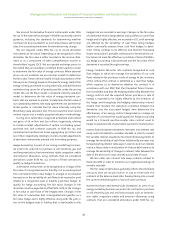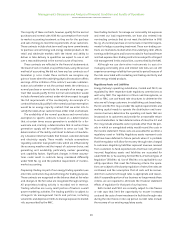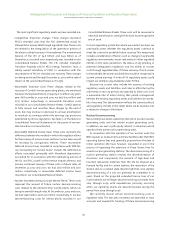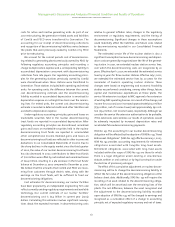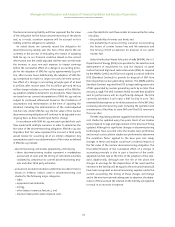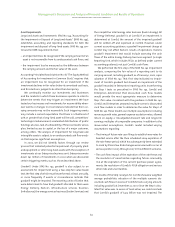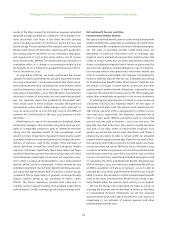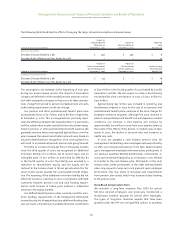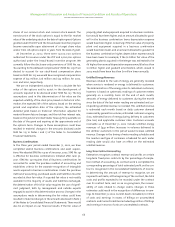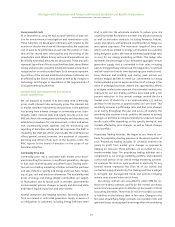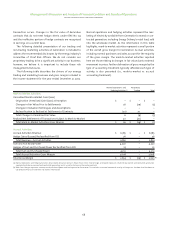ComEd 2002 Annual Report Download - page 60
Download and view the complete annual report
Please find page 60 of the 2002 ComEd annual report below. You can navigate through the pages in the report by either clicking on the pages listed below, or by using the keyword search tool below to find specific information within the annual report.
58
We account for derivative financial instruments under SFAS
No.133.To the extent thatchanges in SFAS No.133 modify current
guidance, including the standards for determining whether
contracts can be accounted for as normal purchases and normal
sales,the accounting treatment for derivatives may change.
We are required under SFAS No. 133 to record derivative
instruments at fair value. Depending on the designation of the
derivative, the fair value is either recorded in the income state-
ment or as a component of other comprehensive income in
shareholders’ equity (OCI). We use quoted exchange prices to
the extent they are available or external broker quotes in order
to determine the fair value of energy contracts.When external
prices are not available, we use internal models to determine
the fair value.These internal models include assumptions of the
future prices of energy based on the specific energy market the
energy is being purchased in using externally available forward
market pricing curves for all periods possible under the pricing
model. We use the Black model, a standard industry valuation
model, to determine the fair value of energy derivative con-
tracts that are marked-to-market.To determine the fair value of
our outstanding interest rate swap agreements we use external
broker quotes or calculate the fair value internally using the
Bloomberg swap valuation tool. This tool uses the most recent
market inputs and a widely accepted valuation methodology.
During 2002,Generation recognized unrealized and realized
net gains of $6 million and $20 million, respectively, relating
to mark-to-market adjustments of certain non-trading power
purchase and sale contracts pursuant to SFAS No. 133 and
unrealized and realized net losses aggregating $9 million and
$20 million, respectively, relating to mark-to-market adjustments
of derivative instruments entered into for trading purposes.
Hedge Accounting. As part of our energy marketing business,
we enter into contracts to purchase or sell electricity, gas and
ancillary products such as transmission rights,congestion credits
and emission allowances, using contracts that are considered
derivatives under SFAS No. 133. Certain of these derivatives
qualify as hedge transactions.
A derivative instrument can be designated as a hedge of the
fair value of a recognized asset or liability or of an unrecognized
firm commitment (fair value hedge) or a hedge of a forecasted
transaction or the variability of cash flows to be received or paid
related to a recognized asset or liability (cash flow hedge). To
qualify for hedge accounting, the fair value changes in the
derivative must be expected to offset 80%-120% of the changes
in fair value or cash flows of the hedged item. Changes in the
fair value of a derivative that is designated and qualifies as a
fair value hedge and is highly effective, along with the gain or
loss on the hedged asset or liability that is attributable to the
hedged risk, are recorded in earnings. Changes in the fair value
of a derivative that is designated as and qualifies as a cash flow
hedge and is highly effective,are recorded in OCI,until earnings
are affected by the variability of cash flows being hedged.
Exelon continually assesses these cash flow hedges to deter-
mine if they continue to be effective and that the forecasted
future transaction is probable.At the point in time that the con-
tract does not meet the effective or probable criteria of SFAS No.
133, hedge accounting is discontinued and the fair value of the
derivative is recorded through earnings.
Energy Contracts. We enter into contracts designated as cash
flow hedges in which we manage the variability of our cash
flows related to the purchase or sale of energy. At the initiation
of the contract the contract is identified as a cash flow hedge,
which requires us to determine whether the contract is in
accordance with our RMP, that the forecasted future transac-
tion is probable,and that the hedging relationship between the
energy contract and the expected future purchase or sale of
energy is expected to be highly effective at the initiation of
the hedge and throughout the hedging relationship. Internal
models that measure the statistical correlation between the
derivative and the associated hedged item determine the
effectiveness of an energy contract designated as a hedge. An
example of a contract that would qualify for hedge accounting
would be a forward over-the-counter sales contract used to
hedge an expected sale of generation exposed to market prices.
Interest Rate Derivative Instruments. We enter into interest rate
swap contracts related to variable rate debt in order to convert
the variable interest payments into fixed interest payments to
manage the variability of cash flows.Additionally,we enter into
forward starting interest rate swaps in order to lock in an interest
rate at a future date in anticipation of a future debt issuance to
manage the variability of changes in interest rates between the
date of the decision to issue and the actual date of issue.
We also enter into interest rate swap contracts related to
fixed rate debt in order to maintain our targeted percentage of
variable rate debt.
The fair value of derivatives generally reflects the estimated
amounts that we would receive or pay to terminate the
contracts at the balance sheet date,thereby taking into account
the current unrealized gains or losses of open contracts.
Normal Purchases and Normal Sales Exemption. As part of our
energy marketing business,we enter into contracts to purchase
or sell electricity, gas and ancillary products such as transmis-
sion rights, congestion credits and emission allowances using
contracts that are considered derivatives under SFAS No. 133.
Management’s Discussion and Analysis of Financial Condition and Results of Operations
exelon corporation and subsidiary companies


